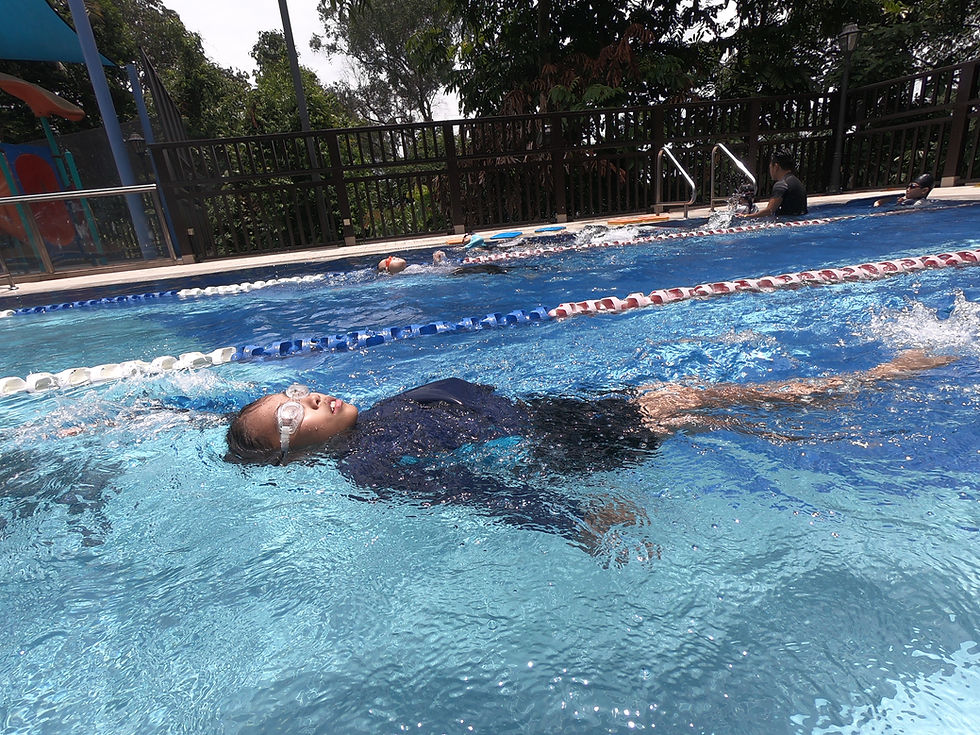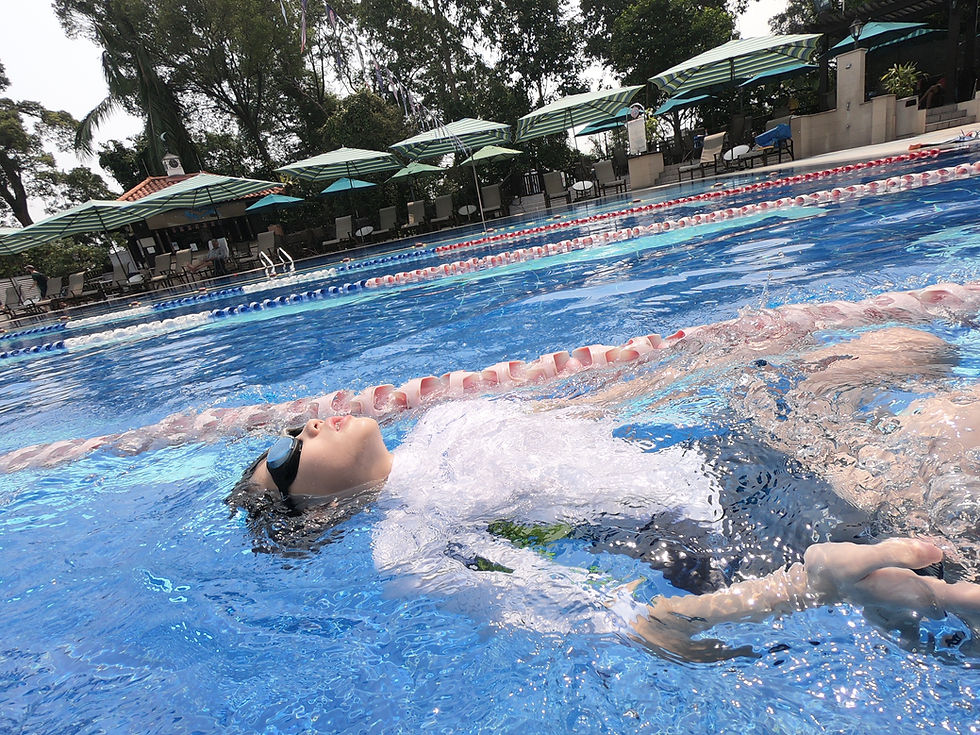Creating a Long-Term Development Plan for Backstroke
- SG Sink Or Swim

- 4 days ago
- 4 min read

Building Champions — One Year, One Skill, One Stroke at a Time
Backstroke is more than a stroke — it’s a journey. From the first flutter kick to the final flip turn of an elite career, developing a world-class backstroker takes more than talent. It takes vision, patience, and a long-term plan that evolves with the athlete’s age, ability, and aspirations.
Too often, programs focus on short-term wins — faster times this season, more medals this meet — while neglecting the foundational skills, physical literacy, and mental resilience that fuel lifelong success. The result? Burnout, injury, and early dropout.
A true long-term athlete development (LTAD) plan for backstroke prioritizes progressive, age-appropriate training that builds technical mastery, physical literacy, and joy in the water — year after year.
In this guide, we’ll outline a science-backed, stage-by-stage roadmap to develop backstroke excellence from childhood through senior competition.
🌊 The 5 Stages of Long-Term Backstroke Development
Stage 1: FUNdamentals (Ages 6–9)
Focus: Water comfort, basic movement, and joy
Key Goals:
Master back float and flutter kick
Learn basic arm recovery (windmill motion)
Build comfort swimming on back
Introduce flip turns (as a game)
Training Guidelines:
2–3 sessions/week, 45–60 min
80% play-based activities, 20% structured skill work
No time-based competition — focus on participation
💡 Cue: “Be a rocket! Kick like a mermaid!”
Stage 2: Learn to Train (Ages 10–12)
Focus: Technique foundation and aerobic base
Key Goals:
Develop high-elbow pull and body rotation
Master legal flip turns
Establish bilateral breathing awareness
Build 400–800m continuous endurance
Training Guidelines:
3–4 sessions/week, 60–75 min
60% technique, 30% aerobic sets, 10% dryland
Introduce time trials (non-competitive)
🎯 Key Drill: 6-Kick Switch — builds rotation and balance
Stage 3: Train to Train (Ages 13–15)
Focus: Skill refinement and aerobic capacity
Key Goals:
Perfect streamline and underwater breakouts
Develop race-specific pacing (100m/200m)
Build mental toughness and race strategy
Introduce strength training (bodyweight/core)
Training Guidelines:
5–6 sessions/week, 90–120 min
40% technique, 40% aerobic/threshold, 20% speed/dryland
Begin competing in age-group meets
💪 Dryland Focus: Core stability, rotator cuff, hip mobility
Stage 4: Train to Compete (Ages 16–18)
Focus: Event specialization and tactical racing
Key Goals:
Optimize stroke rate vs. distance per stroke
Master open water navigation (for triathletes)
Refine starts, turns, and finishes under fatigue
Develop self-coaching and race planning
Training Guidelines:
8–10 sessions/week, 2–3 hrs/day
Individualized plans based on 100m or 200m focus
Video analysis, lactate testing, periodized tapering
📊 Metric Tracking: Stroke count, turn time, underwater distance
Stage 5: Train to Win (Ages 19+)
Focus: Peak performance and elite competition
Key Goals:
Maximize power-to-drag ratio
Perfect race execution under pressure
Extend career through injury prevention
Mentor younger athletes
Training Guidelines:
10–12 sessions/week + advanced dryland
Full support team: coach, physio, nutritionist, psychologist
Strategic competition schedule (e.g., Olympic cycle)
🏆 Mindset: “Champions aren’t made in meets — they’re made in the details of daily practice.”
🧠 Core Principles for Every Stage
1. Technique Before Intensity
Never sacrifice form for speed
Film stroke quarterly — even elites do
2. Balance Over Specialization
Continue freestyle, breaststroke, and IM work
Prevents shoulder imbalances and overuse
3. Recovery Is Part of Training
Sleep, nutrition, and mental rest are non-negotiable
Deload weeks every 4–6 weeks
4. Joy Is the Engine
Celebrate effort, not just results
Keep a “fun Friday” in weekly schedule
“If they’re not smiling, you’re pushing too hard.”
📅 Annual Planning: The Periodization Cycle
Each year should follow a macrocycle with distinct phases:
📆 Example: A summer championship swimmer peaks in July, with a secondary peak in December.
🛠️ Essential Drills by Development Stage
⚠️ Red Flags: When to Adjust the Plan
Persistent shoulder or back pain → Reduce volume, assess technique
Loss of motivation → Add fun, reduce pressure, revisit goals
Plateaued times for 6+ months → Change stimulus (drills, sets, dryland)
Missed growth milestones → Consult sports medicine team
🔄 Flexibility is strength — the best plans adapt to the athlete, not the reverse.
Final Thoughts
A long-term backstroke plan isn’t a rigid blueprint — it’s a living roadmap guided by the athlete’s growth, passion, and health. It honors the journey as much as the destination.
Because the fastest backstroker isn’t the one who peaked at 14. It’s the one who’s still swimming at 24 — stronger, smarter, and more in love with the water than ever.
So build with patience.Train with purpose.And let every year be a step toward a lifetime of excellence.
Roll. Reach. Kick. Turn. Thrive.
Because in backstroke, the sky isn’t the limit —it’s the beginning of a lifelong journey. 💙🏊♂️





Comments